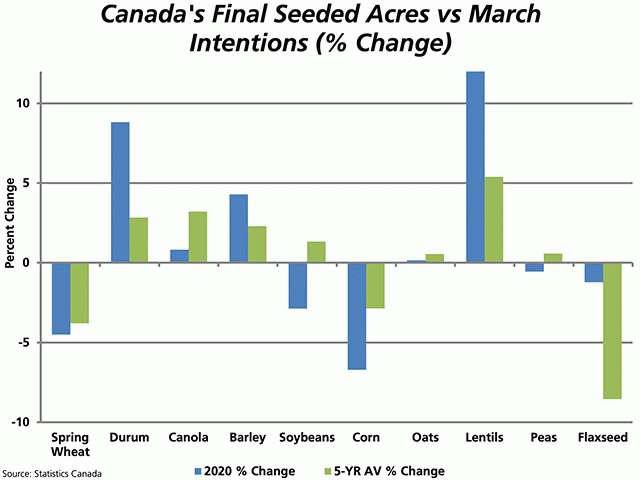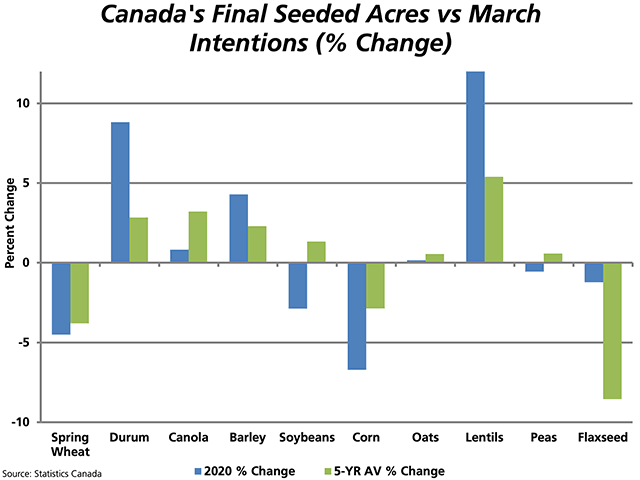Canada Markets
Canada's Seeded-Acre Estimate Revisions From March to Final
There are a number of factors that affect seeded acres each spring, including but not limited to seed availability, soil moisture conditions, preferred rotations, and crop profitability. The spring of 2021 may pose a challenge for forecasters, given the potential favourable returns seen for a number of crops due to tightening global stocks and the spring price rally.
In advance of Statistics Canada's release of March seeding intentions, based on producer surveys, due for release on April 27, we look at the historical change in seeded acres from the earliest estimates released in the spring to the final acres estimated for select crops.
From the attached chart, we see that final estimated acres tend to increase from the earliest spring estimates to the final acres reported for durum, canola, barley, and lentils, as seen in data for 2020 (blue bars) and on average during the past five years (green bars). Acres for spring wheat, corn and flax have tended to be revised lower during the season from the earliest estimates released in the spring. Of the selected crops, acres seeded to soybeans and dry peas have varied, revised lower in 2020 while being revised higher on average over the past five years.
P[L1] D[0x0] M[300x250] OOP[F] ADUNIT[] T[]
Of the crops selected, the greatest consistency is seen in forecasts for spring wheat and flax. In 2020, the final seeded acres for spring wheat was 4.5% lower than estimated in spring, while on average, this change is seen at a 3.8% drop from the spring estimate to the final estimate, having fallen in each of the past five years. Over an even greater span of time, final spring wheat acres have been reported below the March estimate in every year in data checked back to 2010. Looking at flax acres, the final estimate was 1.2% lower 2020, while on average, was 8.5% lower over the past five years, also falling in each of the five years.
In terms of consistency over the past five years, the next closest are canola and lentil acres, which have been revised higher in four of the past five years, along with corn, which have seen a lower revision in four of the past five years.
While not shown, summerfallow acres were revised 18.2% lower in 2020, while on average during the past five years, this estimate has fallen only 1.3% on average from the early forecast released in March to the final estimate.
Of all the crops shown, early estimates of acres seeded to oats are the most accurate, with final acres in 2020 just 0.2% higher than estimated in spring, while on average over five years, final acres were estimated just 0.6% higher.
Cliff Jamieson can be reached at cliff.jamieson@dtn.com
Follow him on Twitter @Cliff Jamieson
(c) Copyright 2021 DTN, LLC. All rights reserved.






Comments
To comment, please Log In or Join our Community .